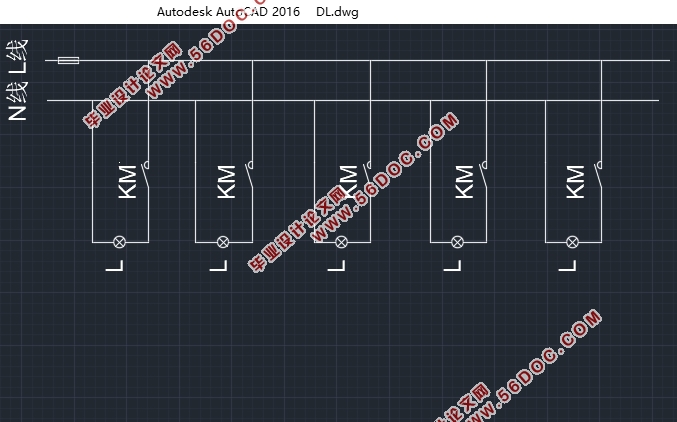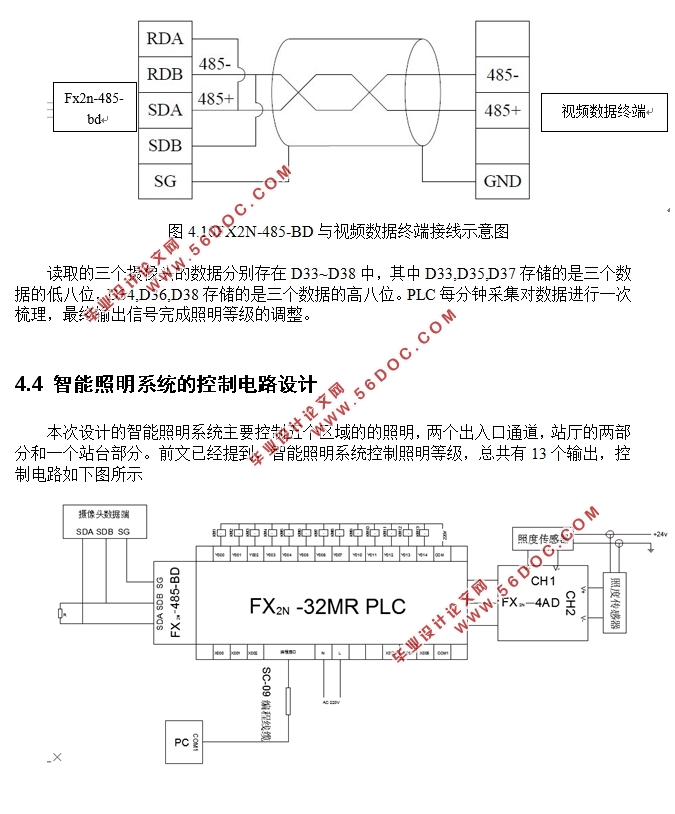基于PLC的车站智能照明系统设计(三菱FX2N)(任务书,开题报告,外文翻译,论文说明书19000字)
摘要
由于城市发展进程不断加快,城市交通压力与日俱增,地铁作为一种地下交通工具且能解决路面的拥堵问题,地铁的建设越来越被重视。在地铁建设中,地铁站作为地铁重要组成部分,能耗巨大是众多严重问题之一。地铁站作为地下建筑,垂直打孔和天窗是不可行的,所以人工照明是唯一满足地铁用户照明的需要的选择。由于照明系统通常长时间工作,照明系统成为地铁系统最大的用电终端之一。我国现在地铁站对于照明系统控制方式十分落后,造成了资源的浪费。因此,本次设计采用一种基于PLC的智能照明系统对地铁站的照明系统进行智能化控制,对解决电能浪费问题具有一定的价值和意义。
在充分调查国内外的地铁站的照明控制方式后,针对目前国内地铁站落后的照明系统,本文设计一个能够采集实时的客流量和外界照度信息,并以此来调节地铁站的照明强度的智能控制系统。为地铁站节省电能且给地铁用户一个绿色的照明环境。
本次设计的智能照明系统由照度检测部分,人数检测部分和人机交互界面组成。通过照度检测部分和人数检测部分将采集的实时客流量和外界照度信息送入PLC中,通过算法不断调整地铁站中的照明等级,给广大乘客一个舒适的体验。
关键词:地铁站;智能照明系统;PLC;照度
Abstract
As the urban development process is accelerating and the pressure on urban traffic is increasing day by day, the subway as an underground transportation and can solve the problem of road congestion, the construction of the subway is increasingly valued. In the construction of subways, subway stations are an important part of the metro, and huge energy consumption is one of many serious problems. Subway stations as underground buildings, vertical holes and skylights are not feasible, so artificial lighting is the only choice to meet the needs of subway users lighting. Since the lighting system usually works for a long time, the lighting system becomes one of the largest power terminals of the subway system. China's subway stations are now lagging behind in the control of lighting systems, causing a waste of resources. Therefore, this design uses an intelligent lighting system based on PLC to intelligently control the lighting system of the subway station, which has certain value and significance for solving the problem of energy waste..
After fully investigating the lighting control methods of subway stations at home and abroad, this paper designs a smart lighting system that can collect real-time passenger flow and external illuminance information and adjust the lighting intensity of subway stations. Control System. Save energy for subway stations and give subway users a green lighting environment.
The intelligent lighting system designed this time consists of the illumination detection part, the number of people detection part and the human-computer interaction interface. The illuminance detection part and the number of people detecting part will send the collected real-time passenger flow and external illuminance information into the PLC, and the algorithm will continuously adjust the lighting level in the subway station to give the passengers a comfortable experience.
Keywords:Subway station; intelligent lighting system; PLC; illumination



目录
第一章绪论 6
1.1 研究目的及意义 6
1.2 研究现状和发展趋势 7
1.3 论文研究内容 8
第二章智能照明系统的分析 9
2.1 地铁站不同区域的光照特点 9
2.2 照明方案的确定 10
2.3 照明灯具的选型 11
第三章基于PLC的智能照明系统控制策略设计 12
3.1 PLC的基本知识 12
3.2 PLC的工作方式及原理 13
3.3 智能照明系统的功能 14
3.4 智能照明系统的组成 14
3.5 智能照明系统的算法设计 15
第四章智能照明系统控制功能模块设计 18
4.1 PLC的选型 18
4.2 照度信息采集模块 19
4.2.2 模拟量模块FX2N—4AD与数据传输 22
4.2.3 照度信息采集程序设计 23
4.3 人流量信息采集模块设计 24
4.3.1 光电开关采集方案 25
4.3.2 压力传感器采集方案 26
4.3.3 热释电红外传感器采集方案 26
4.3.4 图像识别技术采集人流量方案 27
4.3.5 FX2N-485-BD的介绍和通信设置 29
4.4 智能照明系统的控制电路设计 30
第五章上位机监视界面及程序仿真 32
5.1 基于MCGS的上位机监视界面 32
5.2 GX WORKS2的梯形图仿真 34
第六章全文总结与展望 36
6.1 全文总结 36
6.2 展望 36
参考文献 37
附录 40
|







